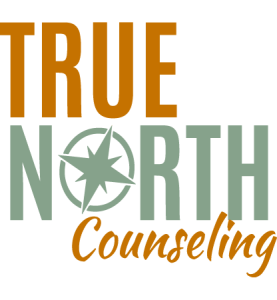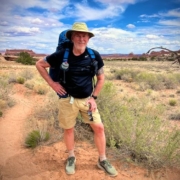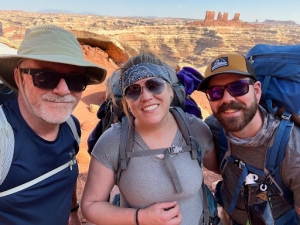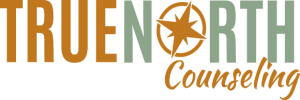This blog is a second reflection on “It was Me all Along: A Memoir,” by Andie Mitchell.
Colorado has 58 Fourteener’s. For those of you not from Colorado, a Fourteener is a mountain with the elevation of over 14,000 feet. I’ve done 11.Grays Peak. Pikes Peak. Quandary peak. Mount Sherman. Mount Ross. Mount Cameron. Mount Lincoln. Mount Bierstadt. Mount Democrat. Torreys Peak. Mount Massive.
I’ve done Democrat twice and Sherman twice. Each has its own memory. So, I guess that makes 13.
I left a $400 camera on the top of Mount Sherman, the first time. I did Bierstadt on my 60th birthday. Mount Massive was on my 55th birthday.
Mount Quandary was the one I almost quit. The last half mile of every Fourteener sucks. As I approached the summit, I could see people congregating on the top. I was spent and oxygen deprived. I thought about turning around. No one would know but me. Even the people I passed on my descent would think I submitted. What’s a quarter mile. I sat down on the small boulder and pondered my decision. I’m not sure what got me off my ass to summit Quandary. Maybe it was inner shame. Maybe it was inner pride. Did I play a mind game on myself, asking myself why waste all the effort that it took to get here? Regardless of that moment, it was mind over body. Sometimes the spirit is willing, and the flesh is weak. Sometimes the spirit is more than willing, it’s strong. That day, it overcame the weakness of my flesh.
Maintaining your breakup with food is no different. In the midst of our Mount Quandary moments, we want to go back to our old relationship habits and seek the comfort that we got from food.
Earlier in the season, episode two, I shared a little about childhood obesity, the new scourge of our country. Andie Mitchell’s book, “It was Me all Along: A Memoir” was the source that I used to share the trauma and shame that many children experience growing up with obesity in America.
What helped her climb her Mount Quandry? What helped her break up with food and maintain that breakup for nearly a decade?
I’m going to share Andie’s breakup with food and want to do that through the lens of the Transtheoretical Model of Change.
In a nutshell, the Transtheoretical Model has five stages.
“The transtheoretical method (TTM) of behavior change is a theoretical model that is based on an integrative theory that is used to assess a person’s readiness to change and adopt new and healthier behavior patterns. Sometimes known as the “stages of change”, it addresses the stages of precontemplation, contemplation, preparation, action, maintenance, and termination. Used for many types of personal change, this approach is arguably the most dominant model of behavior change in use. Each of these steps is important to the change process”(alleydog.com).
The precontemplation stage really is the stage where you’re not even thinking about your problem. The contemplation stage is “Yeah, it’s a problem, and I think about it a lot.”
These are the thinking stages. In the first two stages, there is little action. No breakup. Maybe you’re thinking “Yeppers, there needs to be break up. I need to break up with food.”
That’s the pre-contemplation and contemplation stage.
Maybe like Andie Mitchell, the contemplation stage started in your life with an annual physical in the eighth grade.
Andie Mitchell writes that she began to think differently about her weight when her doctor said, “Andie, my girl, you’ve got to lose weight, or at this rate, you’ll weigh 300 pounds by the time you’re 25.”
She was overwhelmed by that thought. Information. People. Experiences. That’s what moves us through the stages; from thinking stages to doing stages.
The Preparation Stage could easily be called the Learning Stage. She learned the healthy eating and exercise guidelines. Do you know them?
- Eight, 8-ounce glasses of water,
- Lots of fruits and vegetables,
- Limited processed food,
- No sugar,
- 30+ minutes of moving a day.
She later learned about calories. “I learned that most things in life, like cereal and orange juice shouldn’t be limitless.“ Andy moved through the Planning Stage, which is the bridge to the doing stages.
Maybe this is the breakup stage. I’ll repeat: Information. People. Experiences. These are the things that moved Andie through the stages. I believe the two most important skills for breaking up with food are listening and reading. I do not think you can grow, or change, or overcome addiction to something like food, if you do not listen and read. Maybe reading is not exactly what I mean, but you have to be a learner.
Andie moves into the doing stage and then back into the planning stage, and then back to the doing stage again; learning and trying out new skills, learning from her mistakes. She got closer and closer to the summit. She could see the crowd congregating at the top. She wanted to quit, but all that she had done, all that she had seen and heard, made her stronger inside. She had broken up with food and stayed broke up.
She joined Weight Watchers.
“This time around,” she writes, “I took instantly to the Weight Watchers plan. After the first meeting, my motivation and commitment had been restored. Meticulous by nature, I loved the structure, the planning, the goals. It felt comfortable. Counting points taught me the fundamentals of nutrition and portion size, essentials I’d never known that I should inspect ingredient lists for calories, fat, proteins, and fiber, that quantity matters, and quality, too. I liked being given a framework, a quota of points for the day based upon my weight and height in goals, it was up to me to spend them however I wanted. Because though whole foods are wonderful, and lovable and all manner of virtuous, sometimes I wanted to use my points on a brownie, rather than anything more nutritiously sound.”
She had learned a lot about food, about her environment and the people in her environment. She learned how to distract yourself from food and people. She learned and utilized some self-binding concepts. I’ve written about self-binding or setting up barriers between you and what you are addicted to. As a reminder, the Self-Binding methods are spatial self-binding, temporal self-binding, categorical self-binding, and social self-binding. Andie would call Kate or Sabrina to talk about anything as a distraction. She spent time outside in nature. She spent time away in Italy, learning and growing.
And yes, she relapsed, but learned from her mistakes, forgave herself, loved herself, and started running.
Running isn’t the secret “pill“ to stay broke up, but it worked for her. It could’ve been walking, hiking, or cycling, or Jazzercise. She filled up her life with exercise, journaling, professional development, and with living. And she stayed broke up with food. Now she writes a blog. She helps others. That’s what helps her stay broke up.
She saw the summit and got off the boulder and finished.
These obesity memoirs have been absolutely inspiring for me. These are people who have set out on a journey to grow and become the best people they can be, and the healthiest people they can be.
Andie Mitchell broke up with food and stayed broke up. She climbed the mountain.
Postscript: I wrote this blog two days ago. The next day I left my room at the Eagle Fire Lodge, in Woodland Park Colorado, and drove over to Mount Sherman and summited it. It was grueling, 37 degrees, 2027 feet elevation for 2 1/2 miles. And ends at 14,043 feet. There were 50 mile an hour winds at the summit. Quitting did not cross my mind. It was a little scary. The wind and the narrow trail leading up to the summit, and then the thought of slipping on the scree going down. I did a little self-talk and joined the congregating crowd at the top.
To read more entries in the Healthy Aging series, click here.













